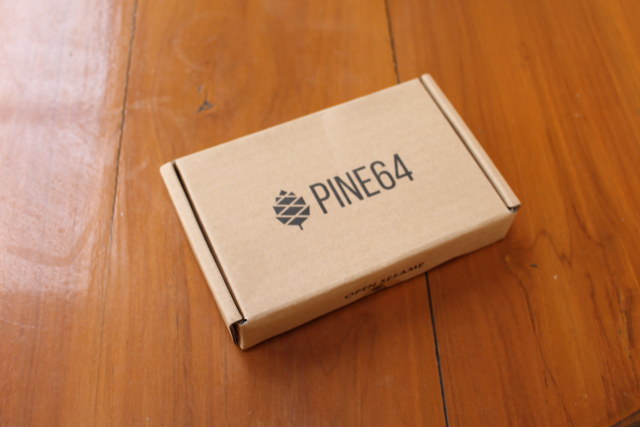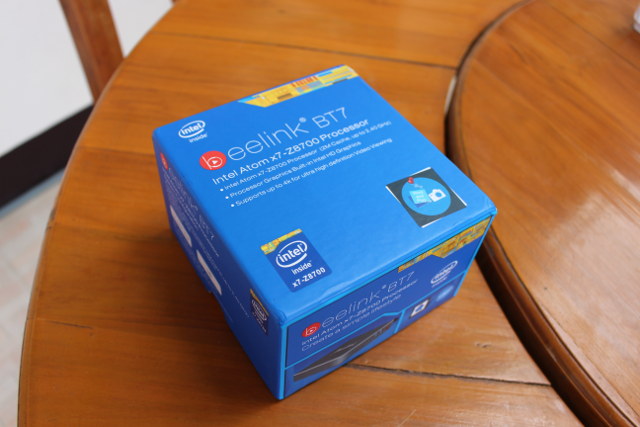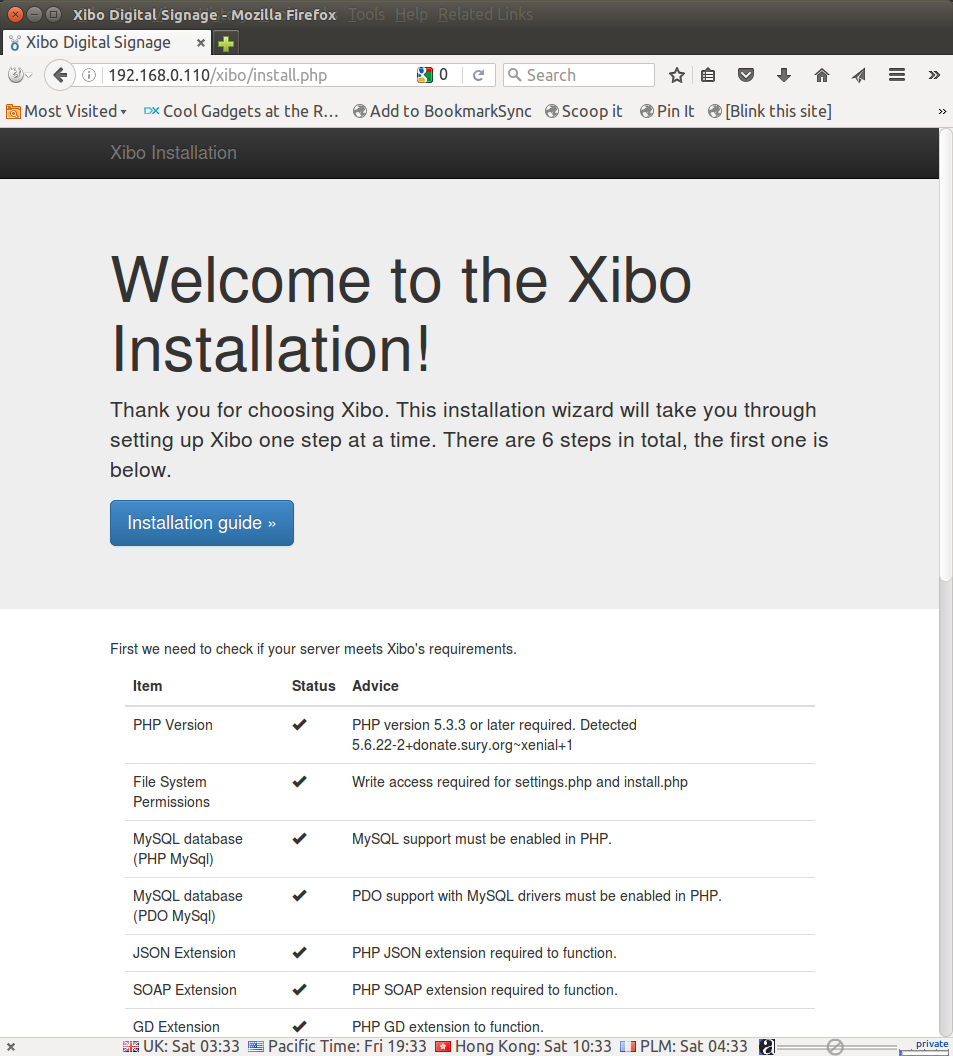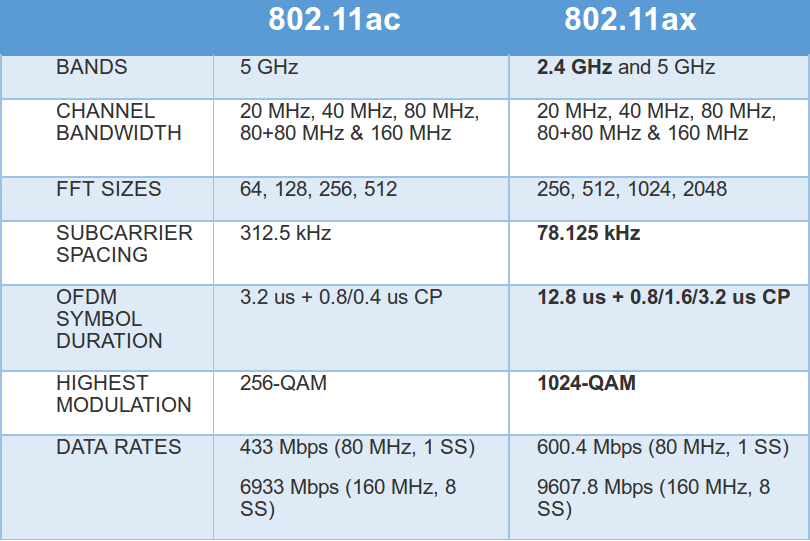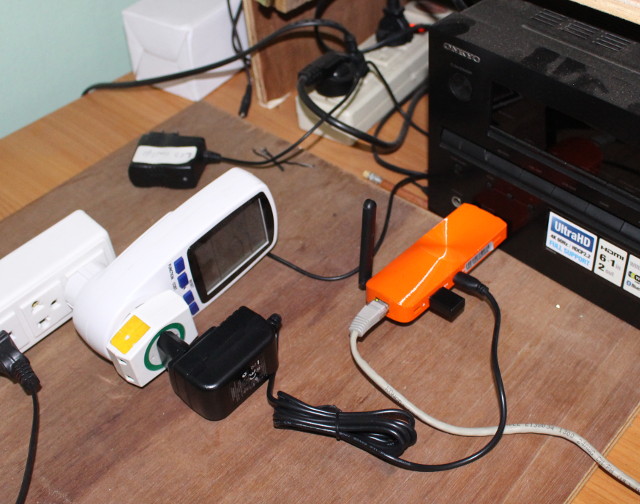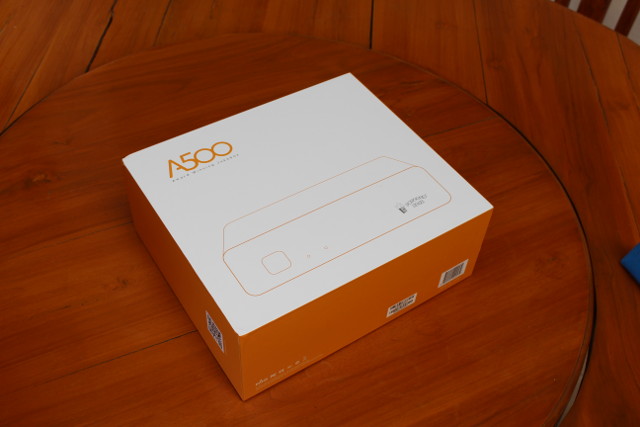Pine A64 is one of the development boards with the best cost/performance ratio, as it sells as low as $15 + shipping. I received Pine A64+ board with 2GB RAM at the end of last month, and decided to start playing with Android, as Linux distributions such as Longsleep Ubuntu appear to require a little more work. So in this post, I’ll report my experience with installing and running Android 5.1 on the board, and share some Android benchmark results. Pine A64 Board Pictures You’ll receive the board in cardboard package with Pine64 branding. You can check which version of the board you’ve been sent on the side of the package: PA64512 (512 MB RAM), PA641GB (1GB RAM), or PA642GB (2GB RAM). The top of the board has been photographed often but here it is again. I’ve been sent the 2GB version without wireless module. The bottom of the board […]
Beelink BT7 mini PC Unboxing and Teardown
Beelink BT7 is one of the few mini PCs based on Atom x7-Z8700, the fastest Intel “Cherry Trail” processor on the market, and should provide a decent alternative to Voyo V3 for people wanting an Ethernet port, and better cooling. The company sent me the version with 128 GB eMMC flash and 4GB RAM, and before reviewing the tiny computer, I’ll post some pictures and check out the hardware, especially the thermal design. Beelink BT7 Unboxing The package looks very similar to Intel NUC retail packages. It will show the complete specs, with highlights for Intel Atom x7-Z8700 processor, and 4K display support. The storage can be 64GB, 128GB or 320 GB, and a sticker on the side shows which model you’ve got. I’ve got the 128 version, but more on that later… The mini PC ships with a 12V/2A power supply (US, UK, EU or AU as requested, a […]
Sunhed S3 Android TV Box is Powered by Hisilicon Hi3798C V200 Processor
HiSilicon Hi3798C V200 processor is designed for high-end TV boxes and media centers with a a quad core Cortex A53 processor, 4K 10-bit H.265 and VP9 video decoding at 60 fps, built-in SATA, Gigabit Ethernet, USB 3.0, and so on. One of the first model to hit the shelves was Himedia Q10 Pro, but I’ve received an engineering sample for Sunhed S3 based on the processor, so let’s have a closer look starting with the specifications and pictures of the device. Sunhed S3 specifications: SoC – HiSilicon Hi3798CV200 quad-core ARM Cortex A53 processor with ARM Mali-T720 GPU System Memory – 2GB DDR3 Storage – 8GB eMMC + SD card slot + external SATA interface Video Output – HDMI 2.0 up to 3840×2160 @ 60 Hz and CVBS output (RCA) Video Codecs – H.265/HEVC 4Kx2K@60fps, MVC, MPEG1/2/4, VC-1, WMV Video Containers – TS, MKV, FLV, MOV, AVI, RM, MP4, ISO Blue-ray […]
How to Install PHP 5.6 (and Xibo Digital Signage CMS) in Ubuntu 16.04
Xibo is an open source digital signage using a client / server architecture, and in the past I wrote a tutorial showing how to use it, and ran Xibo Python client on ARM Linux TV box, but with software handling only so rendering scrolling text was not very smooth at all, and video decoding was not really possible. But now I have Star Cloud PCG02U Intel TV stick which costs just $70 shipped with Ubuntu 14.04, and that I have upgraded to Ubuntu 16.04, and I thought that would be a great low cost Xibo Linux client which should have pretty good performance. I started by installing Xibo server, only to find out that the cross-platform Python client had been phased out, with now only Windows and Android clients available. So I canceled my plan. I still had some challenges installing Xibo server on Ubuntu 16.04, so I’ll report my […]
802.11ax WiFi Aims to Deliver Higher Throughput (Up to 10 Gbps), Better Handle High Density Scenarios
802.11ax WiFi, also known as High-Efficiency Wireless (HEW), aims to improve the average throughput per user by a factor of at least 4 times in dense user environments, with a total bandwidth of 10 Gbps over 2.4 and 5.0 GHz . The new standard is still work in progress and is expected to be published in 2019. 802.11ax WiFi key features include: Backwards compatible with 802.11a/b/g/n/ac Increase 4x the average throughput per user in high-density scenarios, such as train stations, airports and stadiums. Data rates and channel widths similar to 802.11ac, with the exception of new Modulation and Coding Sets (MCS 10 and 11) with 1024-QAM. Specified for downlink and uplink multi-user operation by means of MU-MIMO and Orthogonal Frequency Division Multiple Access (OFDMA) technology. Larger OFDM FFT sizes (4x larger), narrower subcarrier spacing (4x closer), and longer symbol time (4x) for improved robustness and performance in multipath fading environments […]
Star Cloud PCG02U Ubuntu 14.04 TV Stick Review
Star Cloud PCG02U is the first Ubuntu product from MeLE. After taking a few pictures of the TV stick and the board, I’ve tested the performance and functionality of the device. First Boot and Setup You can either connected the stick directly into an HDMI port, or using the provided female to female adapter via an HDMI cable. I’ve opted to insert the device directly into the AUX port of my Onkyo A/V receiver itself connected to my TV. Since there’s only one USB host port, USB keyboard and mouse are not convenient since it would add a USB hub, so I went with Logitech MK270r wireless mouse & keyboard combo instead. You can either used Ethernet or WiFi for Internet connectivity, and I opted for the latter for most of the review, but WiFi is also working fine. The final step is to connect the power supply into the […]
Popcorn Hour A500 4K Linux Media Player Specifications, Unboxing, and Teardown
CloudMedia introduced Popcorn Hour A500 Pro last summer on Kickstarter, and as the company is about the ship rewards to backers, they has now recently introduced a lower cost version, called Popcorn Hour A500, based on the same processor but overall lower specs to bring the price down to $269. The company has sent me a review sample, so I’ll start by listing the hardware specifications, and post pictures of the device and its internals, before testing media playback capabilities later on. Popcorn Hour A500 Specifications The “non-PRO” version has less RAM, dropped the XLR connectors, and uses a cheaper audio DAC: SoC – Sigma Designs SMP8758 dual core ARM Cortex A9 processor @ 1.2 GHz with ARM Mali-400 GPU and VXP image processing engine System Memory – 1GB DDR3 Storage – 512 MB SLC NAND Flash for firmware, 1x SD card reader, internal SATA bay for 2.5″ and 3.5″ […]
Getting Started with Beaglebone Green Wireless Development Board
SeeedStudio introduced BeagleBone Green Wireless based on BeagleBone Green, but replacing the Ethernet port by a Wilink8 WiFi and Bluetooth module, and providing 4 USB ports in total. I’ve also ready taken some picture of the board, and Grove Base Cape to addition the company’s add-on boards via I2C, UART, analog, or digital interfaces. So today, I’ll report about my experience getting started with the board. First Boot of BeagleBone Green Wireless Since the board comes with a Debian image installed on the internal 4GB eMMC flash, checking out the board should be really easy. The Wiki may help, but for a first try to check the board is indeed working, you can simply connect it to a 5V power supply, or the USB port of your computer to port it up. I’m using a development machine running Ubuntu 14.04 with both Ethernet connected to my router, and a WiFi […]


